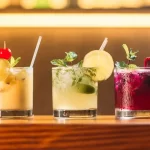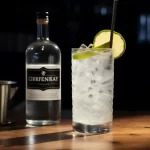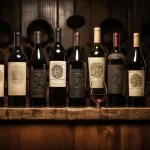Drink pairing, also known as beverage pairing, is the art of selecting a beverage that complements the flavors and textures of a particular dish. It’s all about enhancing the dining experience by creating a harmony between the food and the drink.
The Basic Rules of Drink Pairing
Before we dive into the specifics, it’s important to understand the basic rules of drink pairing.
Rule #1: Match Intensity
A general rule of thumb is to match the intensity of your drink with the intensity of your food. This means pairing light drinks with light dishes and heavy drinks with heavy dishes. For example, a light white wine would pair well with a delicate seafood dish, while a full-bodied red wine would complement a rich steak.
Rule #2: Complement Flavors
Another key rule is to look for flavors in your drink that complement the flavors in your dish. For example, a sweet wine would complement a spicy dish, while a bitter beer would complement a salty dish.
Rule #3: Consider Contrast
Sometimes, contrast can be a good thing! Pairing a sweet drink with a savory dish, for example, can create a pleasing contrast. However, be careful not to create a clash of flavors.
Pairing Drinks with Specific Dishes
Now that you know the basic rules of drink pairing, let’s look at some specific examples of how to pair drinks with different types of dishes.
Seafood
Seafood dishes often pair well with light, acidic drinks such as white wine or champagne. A crisp, dry rosé can also be a good choice. For more flavorful seafood dishes, consider a light red wine or a beer with a low bitterness.
Steak
A rich, full-bodied red wine is the classic pairing for a steak dinner. Look for wines with high tannins, such as Cabernet Sauvignon or Malbec. For a lighter steak dish, consider a medium-bodied red such as Pinot Noir.
Spicy Foods
Spicy foods can be tricky to pair with drinks, but a good rule of thumb is to choose something sweet and fruity to balance out the heat. Try a sweet Riesling or a fruity cocktail. Beer with a low bitterness can also be a good choice.
Cheese
When it comes to cheese, it’s all about finding a drink that complements the flavors of the cheese. For a creamy, mild cheese such as Brie, try a light red wine or a sparkling wine. For a sharp, strong cheese such as Cheddar, look for a full-bodied red wine or a beer with a high bitterness.
Creating Your Own Pairings
Now that you have a basic understanding of drink pairing, it’s time to get creative! Don’t be afraid to experiment with your own unique pairings. Here are some tips to get you started:
Think about the dominant flavors in your dish and look for a drink that either complements or contrasts those flavors.
Consider the texture of your dish. A light, refreshing drink might be a good match for a crispy salad, while a rich, creamy drink might be better suited to a hearty pasta dish.
Look beyond wine and beer. Cocktails, spirits, and even non-alcoholic drinks can all be great choices for pairing with food.
Experiment with different temperatures. Some dishes may pair better with a cold drink, while others may benefit from a warm or hot drink.
Tips for Hosting a Drink Pairing Party
If you want to take your drink pairing skills to the next level, consider hosting a drink pairing party with your friends or family. Here are some tips to make your party a success:
Choose a theme. Whether it’s a specific type of cuisine or a particular type of drink, having a theme can make it easier to plan your pairings.
Offer a variety of drinks. Don’t limit yourself to just wine and beer – offer a variety of drinks to try, including cocktails, spirits, and non-alcoholic options.
Provide guidance. Make sure your guests know the basic rules of drink pairing and offer suggestions for pairings with each dish.
Keep it fun! Don’t take it too seriously – drink pairing is all about exploring new flavors and having fun with your food and drink.
Conclusion
Drink pairing can be a fun and rewarding way to elevate your dining experience. By following the basic rules of matching intensity, complementing flavors, and considering contrast, you can create harmonious pairings that enhance both the food and the drink. Don’t be afraid to experiment with your own unique pairings, and consider hosting a drink pairing party to share your love of pairing with your friends and family.
FAQs
Is it necessary to pair drinks with food?
No, it’s not necessary, but it can enhance the dining experience and add new dimensions of flavor to your meal.
What’s the best drink to pair with pizza?
Beer is a classic pairing for pizza, but you can also try a bold red wine or a refreshing cocktail.
Can non-alcoholic drinks be paired with food?
Absolutely! Non-alcoholic drinks such as tea, soda, or juice can be great choices for pairing with food.
Is it okay to mix drinks while pairing?
Yes, it’s okay to mix drinks while pairing, as long as you keep the basic rules of pairing in mind.
How can I learn more about drink pairing?
There are many resources available online, including books, articles, and blogs, that can help you learn more about drink pairing. You can also attend classes or events at local wine shops or restaurants to get hands-on experience.









